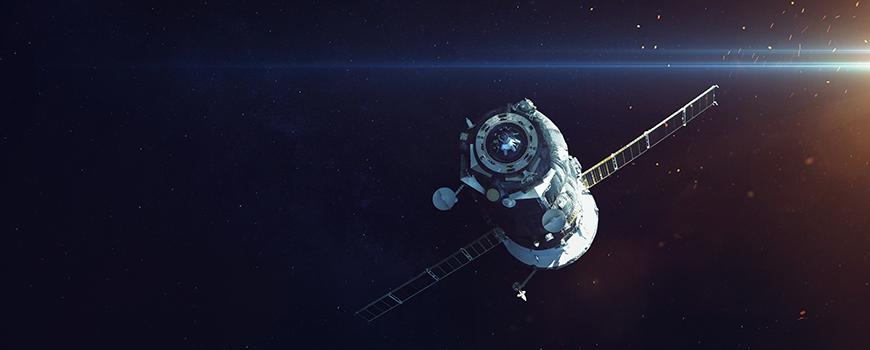Space Law Hopes to Clean Up
By MA Neff
A GPS III SVO2 satellite, nicknamed Magellan, is scheduled to launch tomorrow from Kennedy Space Center in Florida. Two hundred twenty-five miles to the South lies the University of Miami where some of the paralegals who contribute to this blog, earned their Certificate in Paralegal Studies. Despite such proximity of the two launch pads—one to planetary orbit, the moon and deep space and the other to a paralegal career path—Space Law was not one of the areas of practice included in the curriculum.
For one thing, it’s difficult enough here on earth sometimes to control ownership of arctic zones, South China Sea Islands, Greenland, let alone nation borderlines. Then think of outer space as it used to be called, which similar to greenhouse gas emissions, has no boundaries. Space is just out there so jurisdiction as a matter of law gets tricky.
Space Law is comprised of nongovernmental, nonbinding agreements and voluntary treaties dating back to the late 1950s when the former Soviet Union launched the first satellite, Sputnik and the space race. Over time the emphasis has grown from promoting international cooperation, dealing with property rights, space weapons and protection of astronauts to the interests of private companies that are increasingly participating in space programs and launches.
In addition to property rights, there is the risk of space waste from the debris leftover after a mission ends. According to The Economist (August 10, 2019, “Stopping a hard rain”), “a tonne or two of defunct satellites, rocket parts and other manmade orbiting junk hurtles into the atmosphere” every day. The risks are two-fold: First, discarded objects that fall out of orbit could collide with functioning; Second, fragments large enough to fall to earth and injure or kill someone. So far five Japanese sailors on ship and one woman in Oklahoma have been struck, largely because re-entering crafts are often aimed to land in the South Pacific Ocean Uninhabited Area between Chile and New Zealand where there are no islands and nearly no airlines flying.
The number of spacecraft launches in the last decade has grown from 66 to 111 in 2018 according to The Economist. A re-entry-survivability analysis calculates the probability of casualties based on the spacecraft’s design and the population density under its orbit. The acceptable risk is set at 10,000 to one which works out to one chance in 75 trillion for a person. A case could be made for reviewing this heuristic given that NASA adopted it in 1995 and only two countries, Japan and France, signed on a couple years later.
Meanwhile, there are already a half million defunct objects are floating in Earth orbit and are monitored by NASA, not to mention probably millions of smaller bit and pieces. (See article.) Even small pieces moving at 27,000 kilometers per hour (17,000 mph) pose hazards to operationally functioning craft such as communication satellites.
In a class of their own, telecommunication satellites are assigned geosynchronous slots 26,000 miles (41,800 kilometers) above the equator so that they remain in the same location and require little fuel because they move in sync with earth’s rotation. These satellites are operated according to regulations of the UN Agency called ITU (International Telecommunications Union). In 1982 “Broadcasting Principles” were put in place to promote noninterference with other nations’ television signals. Four years later “Remote Sensing Principles” were added to cover electromagnetic waves used to study natural resources and encourage cooperative remote sensing activities that benefit all countries.
The fundamentals of the Outer Space Treaty, the genesis of Space Law, outlines basic principles for peaceful exploration of space. Chief among these is that all nations can explore space freely, but none may make claims of ownership. That was the 1950s. Today, The Economist reports there are two U.S. companies planning to begin mining asteroids, Deep Space Industries (DSI) and Planetary Resources.
In January, 2019 Bradford Space Group acquired DSI, known for manufacturing water-based electrothermal propulsion systems, which has facilities in the Netherlands and Sweden. Planetary Resources’ website claims it is the first company to launch a “Crowdfunded” space exploration (see timeline) and that there are “2 trillion tonnes of water available for life support and fuel in space.” The company boasts that it lobbied for the passage of the U.S.
Commercial Space Launch Competitiveness Act (H.R. 2262) which recognizes the right of U.S. citizens to own asteroid resources they obtain and encourages the commercial exploration and utilization of resources from asteroids. From there it moved on to Europe, where it enticed Luxembourg’s Chamber of Deputies to pass a law in 2016 recognizing the right to own space-based resources. So even if you can’t own the Moon, in Space when it comes to a precious metal-bearing, water-holding asteroid, the practice of homesteading or the adage first come, first serve will suffice as law for the time being.



